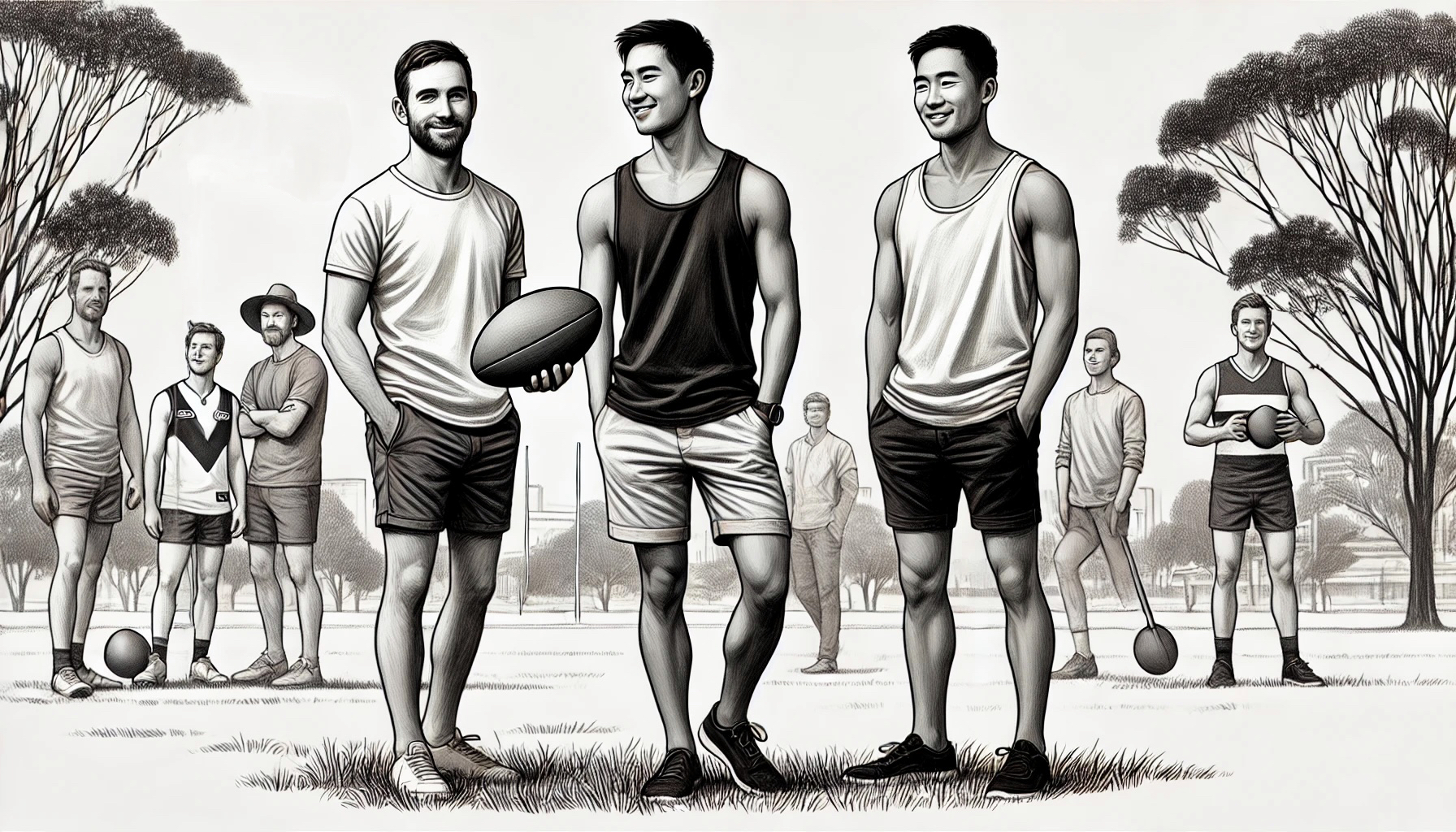I’m sitting in a coffee shop in Manila, waiting for a mate who’s travelled three hours on a bus just to catch up and say goodbye before I head back to Australia. As I wait, a man sits down next to me. He looks Southeast Asian, and we start chatting.
It isn’t until a few minutes into the conversation that I notice his Australian accent. At first, I’d assumed he was Filipino or from somewhere else in the region—proof that even I sometimes default to stereotypes. But as we talk about Australia, there’s this subtle shift—a shared bond that comes from being far from home. It’s a quiet reminder that being Australian isn’t about how you look. It’s about where you come from, the connections you hold, and maybe, the values you carry.
But what are those values? And how do they hold up in today’s Australia?
The Myths That Shape Australian Identity
Certain cliche ideas are often used to define what it means to be Australian: mateship, the “fair go,” and rugged individualism. These concepts evoke images of bushmen, battlers, and camaraderie forged through hardship. For some, these myths provide a sense of pride or comfort. But they don’t always reflect the Australia seen in everyday life.
Mateship
Mateship is often celebrated in moments of crisis—a bushfire or a flood—when people rally for one another. But in less extraordinary times, it can feel absent. Australian social media channels can often be harsh places filled with brutal and unforgiving comments blaming individuals for their circumstances: “They should’ve known better,” or “Not my problem.” Judgment and distance like this don’t feel much like mateship.
The “Fair Go”
The idea of a “fair go” suggests that opportunity is available to everyone, but reality in Australia often tells a different story. Inequality is baked into systems like education, healthcare, and housing. A child growing up in a wealthy suburb will have vastly different opportunities than one in a remote Indigenous community.
Rugged Individualism
Rugged individualism—the image of a self-reliant battler who perseveres against the odds—might sound admirable. But it often isolates people, leaving them to struggle in silence rather than seeking help from their communities. It is also heavily biased in favour of masculinity.
These myths also exclude significant parts of Australia’s history and identity. For example, they rarely acknowledge the foundational connection that Aboriginal peoples have to this land—a connection spanning tens of thousands of years. Reconciling ideas like mateship or a “fair go” with the realities of colonisation and systemic inequality remains a challenge.
Reckoning with the Past
Any discussion of Australian identity must begin with its First Nations peoples. Aboriginal and Torres Strait Islander cultures are among the oldest continuous cultures in the world, with histories, traditions, and knowledge systems that have endured for over 65,000 years. There is much that can be learned from their culture and deeply rooted connection to the land. For tens of thousands of years, they have lived in harmony with the environment, not as conquerors but as caretakers. Their knowledge of the land—its cycles, ecosystems, and stories—could teach modern Australia how to live more sustainably.
First Nations people’s traditional culture also embodies a sense of collective responsibility. Their focus on kinship and community contrasts sharply with the myth of rugged individualism. Within their traditional cultures, success isn’t defined by personal achievement alone but by how it contributes to the well-being of the group. This ethos of interdependence is something the broader Australian community could embrace, especially in a world that often prioritizes self-interest over collective good.
Recognising and celebrating the contributions of First Nations peoples isn’t just about inclusion; it’s about acknowledging that their traditional ways of being—resilience, connection, and care—can profoundly enrich what it means to be Australian.
A Vision for 100 Years
What might Australia look like in 100 years?
Geographically, the country is tied to Asia, but its cultural identity continues to evolve. As demographics shift, the idea of what it means to be Australian will transform. In the future, Australians may not look, sound, or think the way they do today—and that’s not something to fear.
Perhaps the next defining figure in Australian identity will be someone from India, Vietnam, or Africa. They might be standing beside others in the trenches, rebuilding after a natural disaster, or helping a neighbour in need. Their background won’t matter; their actions will.
In 100 years, mateship won’t just reflect Gallipoli. It could look like people from every corner of the globe standing together—not united by where they came from, but by the values they share and the connections they build.
Australia at a Crossroads
The future of Australian identity is uncertain. Perhaps it will embrace diversity, finding strength in differences. Or perhaps it will hold onto outdated myths, even as they lose relevance.
One thing is certain: the Australia of tomorrow will not look like the Australia of today. And that’s okay. Nations, like people, aren’t meant to stay the same.

